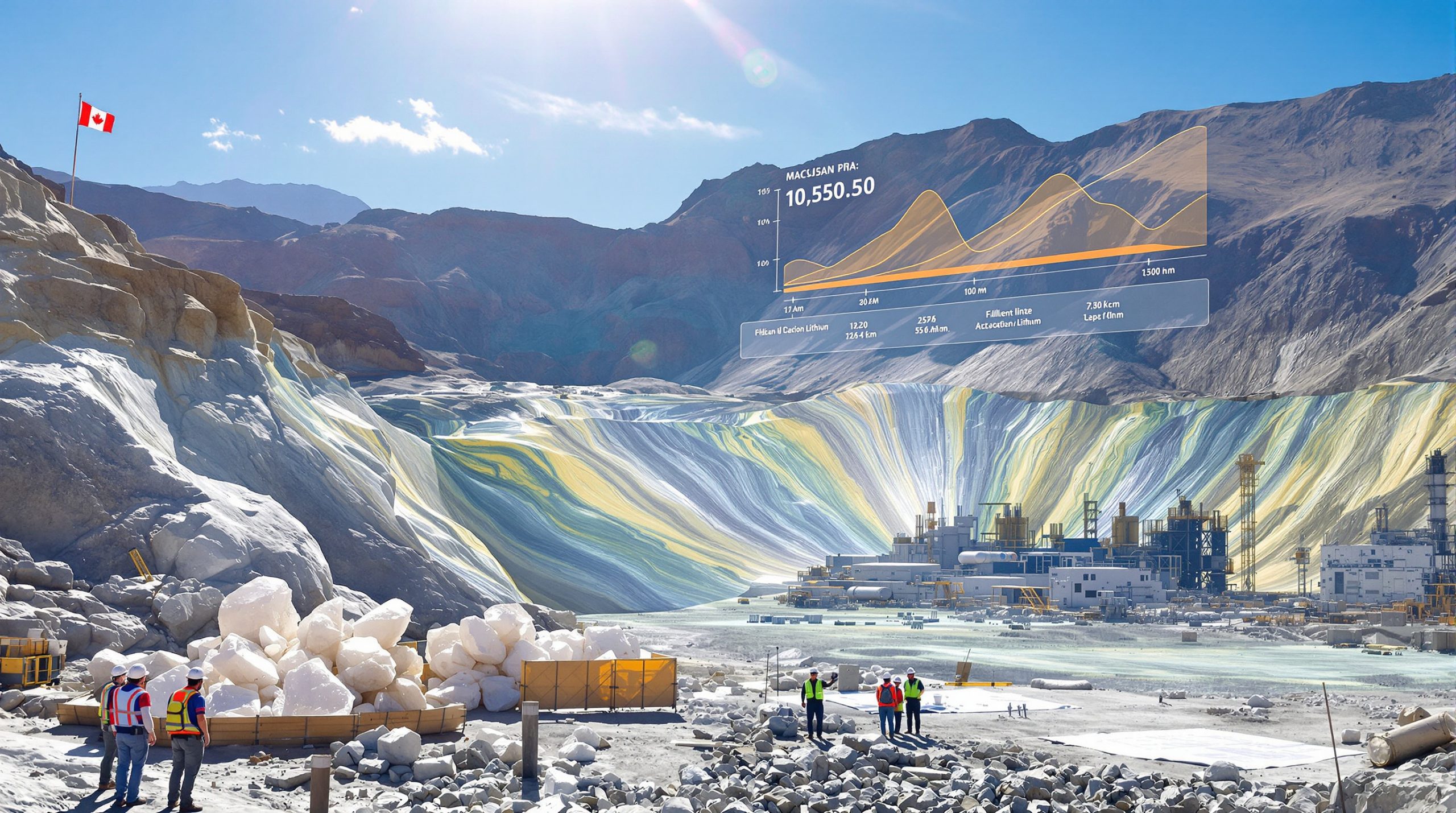The Environmental Battle Over Pebble Mine: Understanding the Opposition
The proposed Pebble Mine in Alaska represents one of the most contentious resource development projects in recent U.S. history. Located near the headwaters of Bristol Bay in southwest Alaska, this massive copper-gold project has faced unprecedented Pebble mine environmental opposition from environmental groups, local communities, and regulatory bodies. The controversy centers on the fundamental conflict between mineral extraction and environmental preservation in one of the world's most productive wild salmon ecosystems.
The Project's Scale and Location
The Pebble deposit contains significant reserves of copper, gold, molybdenum, and other minerals valued at hundreds of billions of dollars. However, its location in the Bristol Bay watershed places it directly upstream from the world's largest sockeye salmon fishery—a resource that generates approximately $2.2 billion annually and supports over 15,000 jobs.
Timeline of Environmental Battles
- 2007-2010: Initial exploration and project development
- 2014: EPA initiates Clean Water Act Section 404(c) review
- 2019: Army Corps of Engineers draft Environmental Impact Statement
- 2020: Army Corps denies key permit
- 2023: EPA issues final determination blocking mine development
- 2025: Ongoing litigation and appeals by Northern Dynasty Minerals
Why Do Environmental Groups Oppose Pebble Mine?
Threat to Wild Salmon Populations
The Bristol Bay watershed supports the world's largest sockeye salmon fishery, with annual runs averaging 40-60 million fish. Environmental scientists have identified several mechanisms through which mining operations could harm salmon:
- Habitat destruction: Mining would directly eliminate miles of spawning streams and thousands of acres of wetlands
- Water quality degradation: Acid mine drainage and metal leaching could contaminate waterways
- Water flow alterations: Changes to groundwater and surface water flows could affect spawning conditions
- Catastrophic failure risks: A tailings dam failure could release toxic materials into the watershed
Risk Assessment Studies
Multiple scientific assessments have concluded that even under normal operations, the mine would likely cause significant and potentially irreversible damage to fish populations. According to a peer-reviewed EPA assessment, the mine would:
- Directly destroy up to 94 miles of salmon streams
- Eliminate approximately 4,900 acres of wetlands
- Permanently alter water chemistry in downstream areas
- Create perpetual risks from waste storage facilities
How Has the Local Community Responded?
Indigenous Opposition
The Bristol Bay region is home to several Alaska Native communities whose cultural identities and subsistence practices are deeply connected to salmon. Their opposition has been particularly significant:
- Cultural preservation concerns: Salmon fishing traditions date back thousands of years
- Subsistence livelihood threats: Many families depend on salmon harvests for food security
- Tribal sovereignty issues: Questions about consultation and consent processes
Commercial Fishing Industry Resistance
Bristol Bay's commercial fishing industry has been a powerful voice against the mine:
- The fishery supports approximately 15,000 jobs
- Annual economic value exceeds $2.2 billion
- The industry has invested heavily in sustainable certification
- Market concerns about perception of Bristol Bay salmon if mining proceeds
Tourism and Recreation Stakeholders
The region's pristine wilderness supports a significant tourism economy:
- Sport fishing generates approximately $75 million annually
- Wildlife viewing and wilderness experiences attract thousands of visitors
- Tourism operators fear permanent damage to the region's wilderness appeal
What Regulatory Actions Have Been Taken Against Pebble Mine?
EPA's Clean Water Act Authority
The EPA has exercised its authority under Section 404(c) of the Clean Water Act to restrict mining activities in the Bristol Bay watershed:
- 2014: Initial watershed assessment identified significant risks
- 2023: Final determination prohibited disposal of mining materials in certain waters
- Legal basis: Finding of "unacceptable adverse effects" on fishery areas
Army Corps of Engineers Permit Denial
In 2020, the U.S. Army Corps of Engineers denied a key permit for the project:
- Determination that the project "could not be permitted" under Clean Water Act
- Finding that the project would cause "significant degradation" to aquatic resources
- Conclusion that proposed waste management solutions were inadequate
State-Level Regulatory Challenges
Alaska state agencies have taken varying positions on the project:
- Department of Natural Resources has supported mining rights
- Department of Fish and Game has expressed concerns about salmon impacts
- Conflicting mandates between resource development and conservation
What Scientific Evidence Supports Environmental Concerns?
Hydrological Impact Studies
Scientific research has identified several water-related concerns:
- Groundwater connectivity: Underground water flows connect the mine site to salmon streams
- Acid rock drainage potential: Ore body contains sulfide minerals that can generate acidic runoff
- Perpetual water treatment requirements: Contaminated water would require treatment indefinitely
Ecosystem Vulnerability Assessment
The Bristol Bay watershed has several characteristics that make it particularly vulnerable:
- Limited buffering capacity: Low mineral content in streams provides little natural protection against acidification
- Complex hydrology: Interconnected surface and groundwater systems spread contamination
- Pristine baseline conditions: Even small changes could have significant biological impacts
Long-term Monitoring Challenges
Scientific assessments have highlighted the difficulty of monitoring and managing environmental impacts:
- Remote location: Limited access complicates regular monitoring
- Seasonal variations: Extreme weather conditions affect monitoring capabilities
- Cumulative effects: Multiple small impacts may combine in unpredictable ways
How Has the Mining Company Responded to Opposition?
Northern Dynasty's Project Modifications
The project developer has made several changes to address environmental concerns:
- Reduced initial mine footprint by approximately 50%
- Eliminated cyanide use from ore processing plans
- Proposed enhanced water management systems
- Offered financial commitments to local communities
Economic Benefit Claims
The company has emphasized potential economic benefits:
- Projected creation of 2,000+ direct jobs
- Estimated $400+ million in annual economic activity
- Tax revenue generation for state and local governments
- Development of infrastructure in a remote region
Ongoing Financing Efforts
Despite regulatory setbacks, Northern Dynasty continues to seek funding:
- Recent $12 million royalty payment received in 2025
- Total of $48 million raised through royalty agreements
- Focus on precious metals streaming to attract investors
- Legal challenges to regulatory decisions continue
What Legal Battles Continue Around Pebble Mine?
Current Litigation Status
Multiple lawsuits challenge both the EPA's veto and the Army Corps' permit denial:
- Northern Dynasty and the State of Alaska have filed separate legal challenges
- Cases focus on administrative procedure and statutory authority
- Filing of opening briefs scheduled for October 2025
Potential Legislative Interventions
Some lawmakers have proposed legislation to address the controversy:
- Bills to explicitly protect Bristol Bay from large-scale mining
- Proposals to modify Clean Water Act authority
- Attempts to balance mineral development and environmental protection
International Legal Considerations
The project has also raised international legal questions:
- Potential impacts on migratory species protected by treaties
- Indigenous rights under international conventions
- Cross-border pollution concerns with Canada
What Would Be the Global Environmental Significance of Pebble Mine?
Precedent for Resource Development in Sensitive Areas
The Pebble decision could influence resource development globally:
- Similar conflicts exist between mining and conservation worldwide
- The case demonstrates evolving environmental assessment standards
- Regulatory approaches may be adopted by other jurisdictions
Climate Change Considerations
The project raises complex questions about mineral needs for clean energy:
- Copper is essential for renewable energy solutions infrastructure
- Mining's environmental footprint must be balanced against climate benefits
- Alternative sources for critical minerals are being explored
Biodiversity Conservation Implications
The Bristol Bay ecosystem represents a globally significant conservation priority:
- Contains one of the last intact Pacific salmon ecosystems
- Supports over 190 bird species and diverse wildlife
- Provides ecological services beyond commercial value
What Are the Sustainable Development Alternatives?
Responsible Mining Standards
Some stakeholders advocate for stricter sustainable mining practices rather than prohibition:
- Enhanced water quality protection requirements
- More robust financial assurance for cleanup
- Independent monitoring and enforcement mechanisms
- Community benefit agreements and co-management
Regional Economic Diversification
Communities are exploring economic alternatives to large-scale mining:
- Value-added processing for fishery products
- Sustainable tourism development
- Renewable energy projects
- Traditional knowledge-based enterprises
Conservation Finance Mechanisms
Innovative financing approaches are being considered:
- Conservation easements to protect critical habitat
- Carbon and biodiversity credits for intact ecosystems
- Impact investment in sustainable businesses
- Public-private partnerships for watershed protection
What Lessons Can Be Learned from the Pebble Mine Controversy?
Early Stakeholder Engagement
The case highlights the importance of early and meaningful consultation:
- Indigenous communities must be engaged from project inception
- Traditional knowledge should inform environmental assessment
- Social license to operate is essential for project viability
Comprehensive Risk Assessment
The controversy demonstrates the need for thorough risk evaluation:
- Low-probability, high-consequence events must be considered
- Cumulative impacts require careful analysis
- Long-term environmental liabilities must be quantified
Balancing Resource Development and Conservation
The case illustrates fundamental questions about development priorities:
- Some ecosystems may be too valuable or vulnerable for certain activities
- Economic benefits must be weighed against environmental costs
- Mine reclamation importance has become a central consideration in the Pebble Mine debate
Conclusion: The Future of Pebble Mine and Similar Projects
The Pebble mine environmental opposition represents a watershed moment in the evolving relationship between resource extraction and environmental protection. As Northern Dynasty continues to pursue project approval through negotiations and litigation, the fundamental questions about whether and how mining can proceed in ecologically sensitive areas remain unresolved.
The case demonstrates the increasing complexity of natural resource decisions, where scientific evidence, indigenous rights, economic development, and ecosystem conservation must all be considered. Whatever the ultimate outcome, the Pebble Mine controversy will likely influence resource development decisions and mining claims framework for decades to come.
The unprecedented scope of Pebble mine environmental opposition—spanning tribal governments, commercial fishermen, conservation organizations, and regulatory agencies—suggests that future resource projects will face increasingly rigorous scrutiny when proposed in ecologically significant areas. This may ultimately lead to more sustainable approaches to meeting society's mineral needs while protecting irreplaceable natural systems, according to analysis from Earthjustice.
Disclaimer: This article presents an analysis of ongoing legal, regulatory, and environmental issues surrounding the Pebble Mine project. The situation continues to evolve, and future regulatory or court decisions may alter the project's status. Economic projections and environmental impact assessments mentioned are based on available information and are subject to change as new data emerges.
Looking for Early Alerts on the Next Major Mineral Discovery?
Stay ahead of the market with Discovery Alert's proprietary Discovery IQ model, which instantly notifies investors about significant ASX mineral discoveries and transforms complex data into actionable insights. Visit the Discovery Alert discoveries page to understand how major mineral discoveries like those mentioned can generate substantial returns, and begin your 30-day free trial today.




